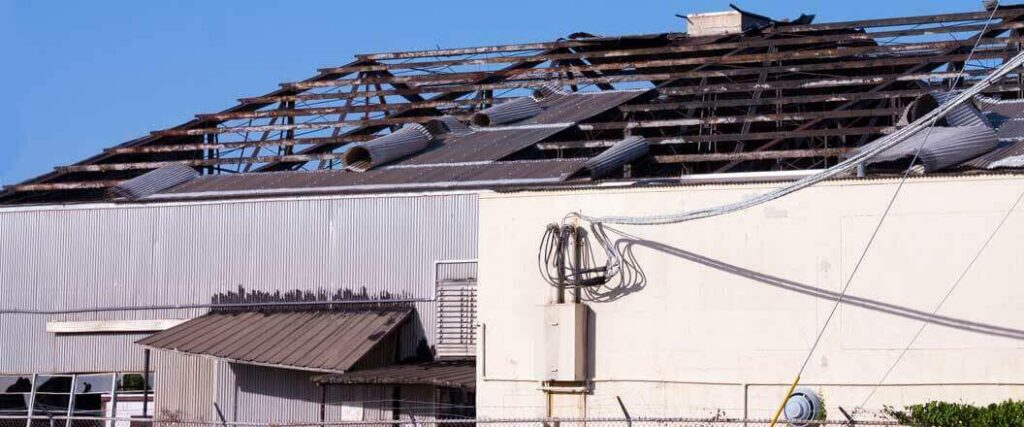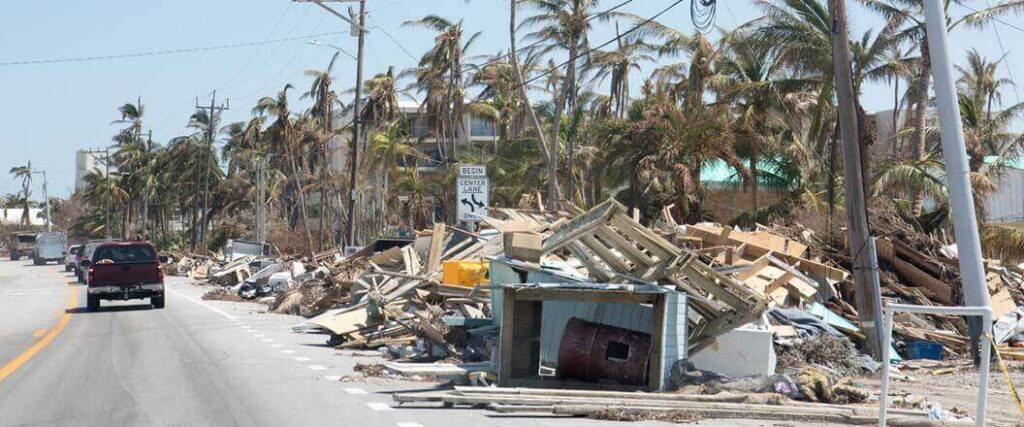



Post-hurricane recovery is crucial for businesses located in the path of these dangerous storms. The damage to physical assets and disruption of operations due to hurricanes can send a profitable business into the red. Smart preparation lets savvy business owners turn this crisis into a display of resilience.
Is your business prepared to recover from extreme storm damage? Find out as we look at the steps shippers, resellers, and wholesalers should follow in the wake of a hurricane.

Preparation is the cornerstone of successful post hurricane recovery. A business with a plan in place for these emergencies has a good chance of minimizing losses. Those losses can be considerable: just take a look at the top five costliest hurricanes in U.S. history.
| Storm Name | Losses in Millions of USD |
| Katrina | $98,727 |
| Ian | $52,500 |
| Ida | $39,256 |
| Sandy | $38,688 |
| Harvey | $36,540 |
Source: iii.org
There are two specific types of plans that address emergency situations.
These plans are at the heart of post hurricane recovery. They address everything from what to do during the storm itself to site cleanup and data recovery. If a hurricane is on its way to your area, these plans are where you start to react.

Businesses use a DRP to recover from catastrophic events, such as hurricanes. Its chief concern is recovering data from a business’s data center in a post-disaster scenario. This plan is a blueprint for post hBusinesses use a DRP to recover from catastrophic events, such as hurricanes. Its chief concern is recovering data from a business’ data center in a post-disaster scenario. This plan is a blueprint for post hurricane recovery activity. When properly executed, it helps to quickly restore critical functions and reduce losses.
A typical disaster recovery plan checklist might contain the following elements.
This includes emergency contact lists and procedures for securing property.
Once the storm passes, it’s crucial to evaluate and document damages.
A key step in the DRP is examining and restoring IT systems.
It’s important to have a step-by-step plan for getting employees back to work after the storm passes.
You’ll need procedures for dealing with floods and power outages. Hurricanes also leave debris and closed roads in their wake.
Once you’ve documented damages and losses, contact your insurance provider.
A detailed DRP is vital to minimize the impacts of natural disasters and ensure a speedy return to normalcy. Another strategy businesses use in such a situation is the previously mentioned BCP.
Find out how hurricane cargo insurance can help you ride the storm out.

BCPs and DRPs are big parts of a business's post hurricane recovery strategy. With that said, their exact BCPs and DRPs are big parts of a business' post hurricane recovery strategy. With that said, their exact purposes do differ somewhat, especially considering that a BCP’s goal might involve working through a natural disaster. Understanding how they differ is crucial for business owners.
You can check out our detailed article on business continuity plans here. They differ from DRPs in the following ways.
Purpose
Goals
Hurricane-Specific Considerations
Implementing these plans at the right time is vital for businesses to beat the challenges posed by hurricanes. Together, they provide a comprehensive approach to disaster preparedness and recovery.
Remember to enact your BCP before the storm falls, and your DRP after it passes. This order of operations is crucial for business recovery after natural disasters.

Perhaps the most common after-effect of a hurricane is debris. This debris can consist of anything from uprooted trees to contaminated garbage. Large or small, scattered debris can cause:
During the disaster recovery process, hurricane debris removal requires a careful approach. You’ll need to consider personal safety and all relevant regulations. If your business is affected by debris after a storm, you should consider partnering with a professional emergency logistics provider. Their experience makes for fast removal and recovery.
Professional hurricane debris pickup lessens the burdens and risks of post-storm cleanup for business owners. Here are some ways the expertise of these professionals can help.
Quick evaluation of debris types and efficient removal strategies.
Proper separation of debris for recycling.
Safe removal and disposal of hazardous materials to prevent health risks.
Outsourcing this task allows business owners to focus on increasing profits and meeting customer needs.
Their ability to mitigate further damage can result in reduced recovery expenses.
Working with hurricane debris removal contractors is a smart way to streamline the cleanup process. Their expertise and knowledge make them valuable allies in the aftermath of a hurricane. By employing a contractor, you can return to normal operations quickly.
Hurricanes bring the potential for devastation on a massive scale. However, with the right logistics partner, you and your business can weather the storm.
Emergency Management Logistics is staffed by experts in post-disaster logistics needs. From hurricanes to wildfires and everything in between, we have the resources businesses need in the wake of disaster.
In addition to debris removal, contact us for services such as:
Don’t wait until hurricane season to get ready. Call us at (855) 420 9447 or get in touch with us online today. We’re ready to help you weatherproof your business.